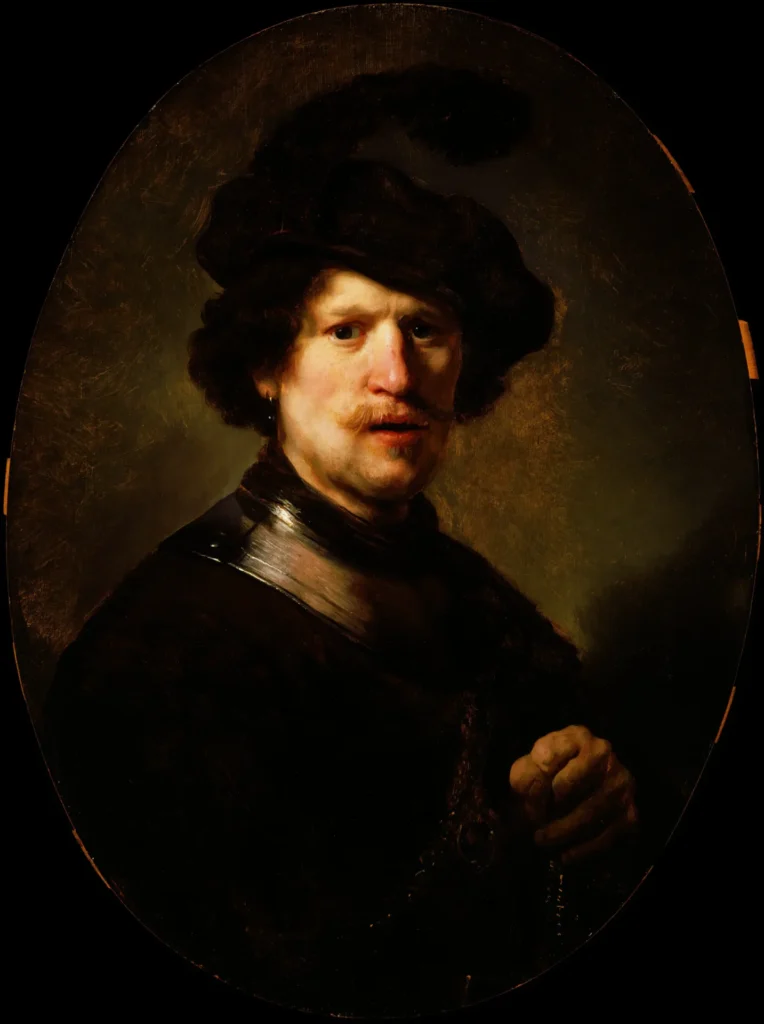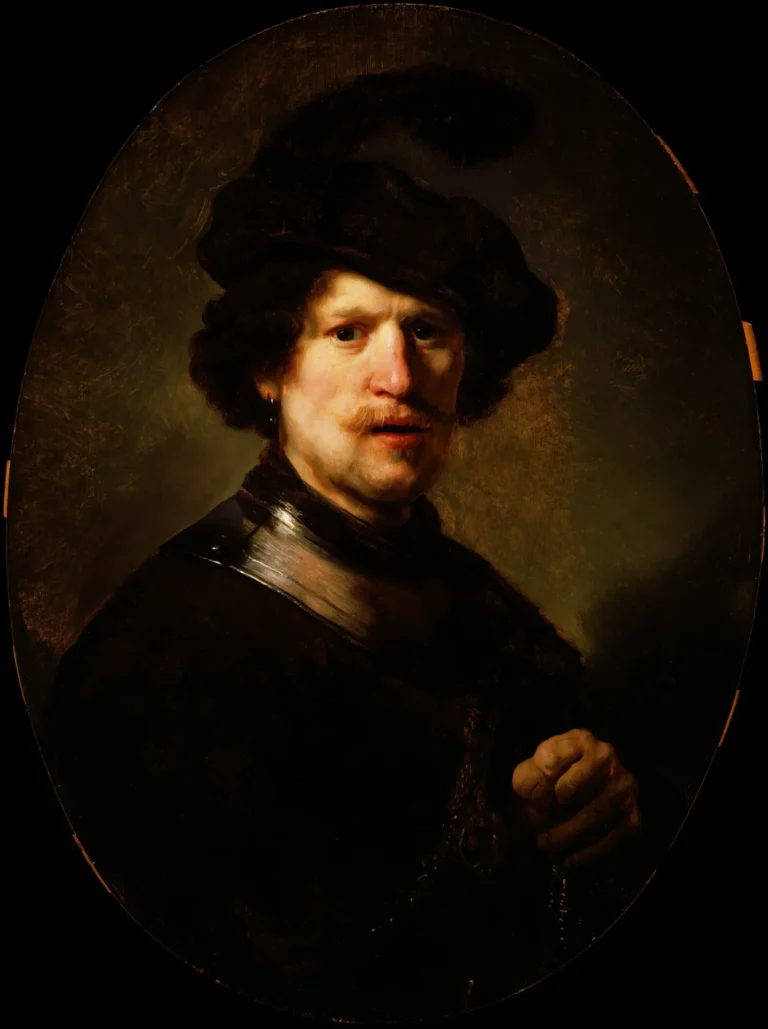Man wearing a plumed Beret and Gorget
The 'Bust of a Man Wearing a Gorget and Plumed Beret' dating around 1626-1627, is one of Rembrandt's earliest single-figure paintings displaying rich colors and intricate detail, portraying a character study rather than a historical figure. In contrast, Man wearing a plumed Beret and Gorget from the mid-1630s exhibits a capture of the era with slight variations, attributed to Rembrandt's workshop, highlighting the ongoing artistry of the time. Both pieces reflect the fashion of their time, serving as fascinating insights into Rembrandt's oeuvre.
mid-1630s
About the Artwork
Did You Know
Liked what you see? Add it to your collection.
Enjoyed reading? Share it.
... continued
Bust of a Man Wearing a Gorget and Plumed Beret (c. 1626-1627)
This painting is attributed to Rembrandt and is considered one of his earliest single-figure paintings. It depicts a man in a gorget and a plumed beret, which was a costume fashionable in the 15th century. The painting is small, measuring 39.8 by 29.4 centimeters, and is executed in oil on an oak panel. It is currently held in a private collection, specifically the Thyssen-Bornemisza family Collection. The subject is believed to be a character study or 'tronie' rather than a specific historical figure.
Man Wearing a Plumed Beret and Gorget (mid-1630s)
This painting, housed at the Detroit Institute of Arts, is also associated with Rembrandt but is sometimes attributed to his workshop rather than the master himself. It dates to the mid-1630s and is slightly larger than the first painting, measuring 27 1/8 by 20 3/8 inches. The work is also on an oak panel and depicts a similar subject wearing a gorget and a plumed beret. The provenance of this painting includes several notable collectors and auctions before it was gifted to the Detroit Institute of Arts by the Matilda R. Wilson Fund.










